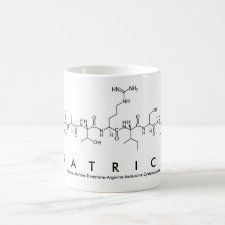
Authors: Thoelen R, Vansweevelt R, Duchateau J, Horemans F, D'Haen J, Lutsen L, Vanderzande D, Ameloot M, vandeVen M, Cleij TJ, Wagner P
Article Title: A MIP-based impedimetric sensor for the detection of low-MW molecules.
Publication date: 2008
Journal: Biosensors and Bioelectronics
Volume: 23
Issue: (6)
Page numbers: 913-918.
DOI: 10.1016/j.bios.2007.08.020
Alternative URL: http://www.sciencedirect.com/science/article/B6TFC-4PKPGPV-5/2/c87762cc26b6f233ef4d53ebd8ce2cc0
Abstract: Mimicking the selectivity and sensitivity of biological systems for sensor devices is of increasing interest in biomedical, environmental and chemical analysis. Synthetic materials with imprinted nanocavities, acting as highly selective artificial receptors, are a tailor-made solution in obtaining such a sensor. Incorporation of such molecularly imprinted polymers (MIPs) in a platform suitable for electrochemical measurements, can offer high sensitivity together with device miniaturization and an electronic read-out. As a proof of principle, a MIP-based sensor for l-nicotine has been developed. To this end, the molecular structure of l-nicotine was imprinted in a polymer matrix of polymethacrylic acid (PMAA). Subsequently, microparticles of the imprinted polymer were immobilized on thin films of the conjugated polymer OC1C10-PPV. These films were incorporated in an impedimetric sensing device. Using electrochemical impedance spectroscopy, the real part of the impedance was monitored for various concentrations. This setup allows for the detection of l-nicotine from 1 to 10 nM and is insensitive for the resembling molecule l-cotinine
Author keywords: molecular imprinting, l-Nicotine sensor, impedance spectroscopy, conjugated polymers



Join the Society for Molecular Imprinting

New items RSS feed
Sign-up for e-mail updates:
Choose between receiving an occasional newsletter or more frequent e-mail alerts.
Click here to go to the sign-up page.
Is your name elemental or peptidic? Enter your name and find out by clicking either of the buttons below!
Other products you may like:
 MIPdatabase
MIPdatabase









